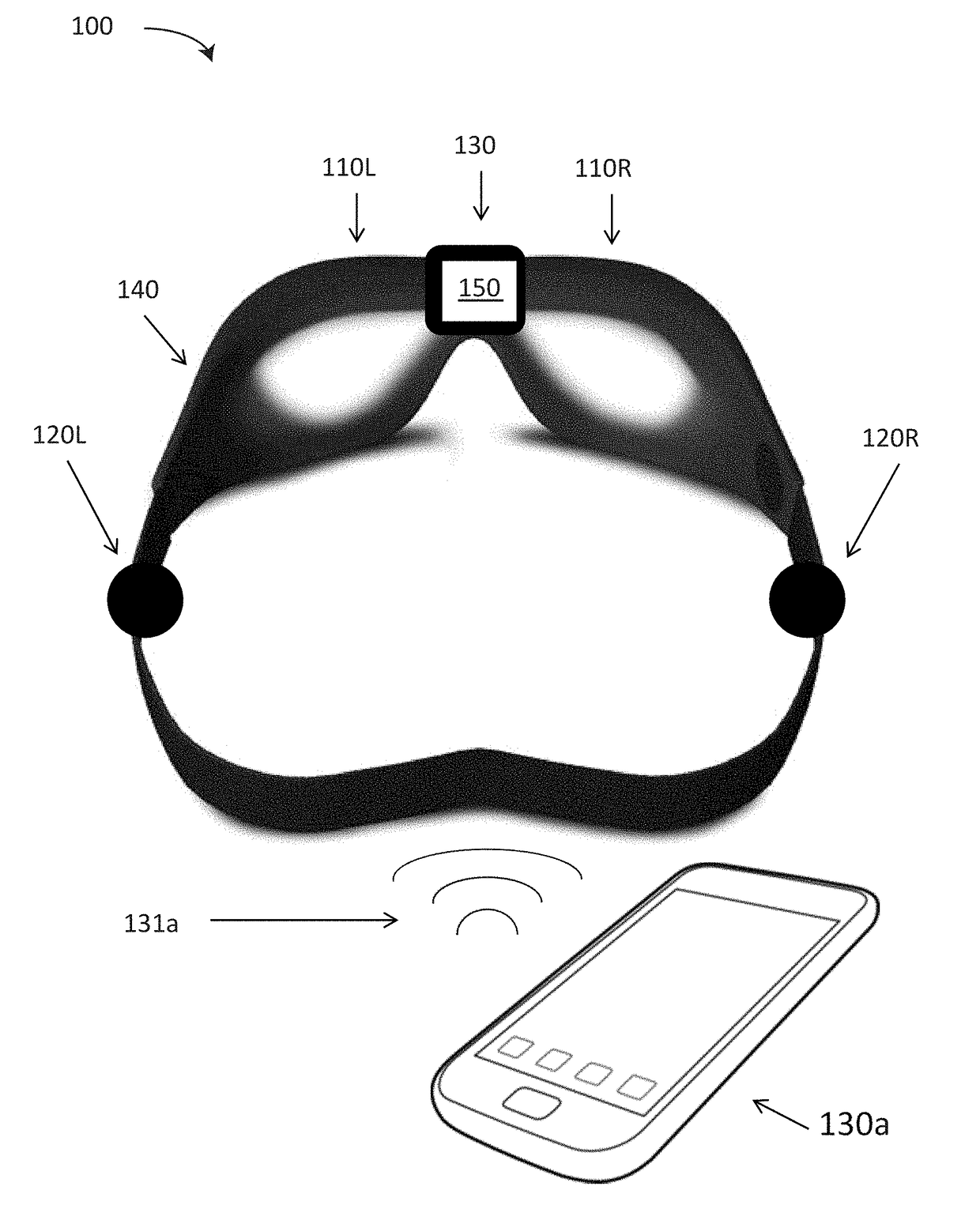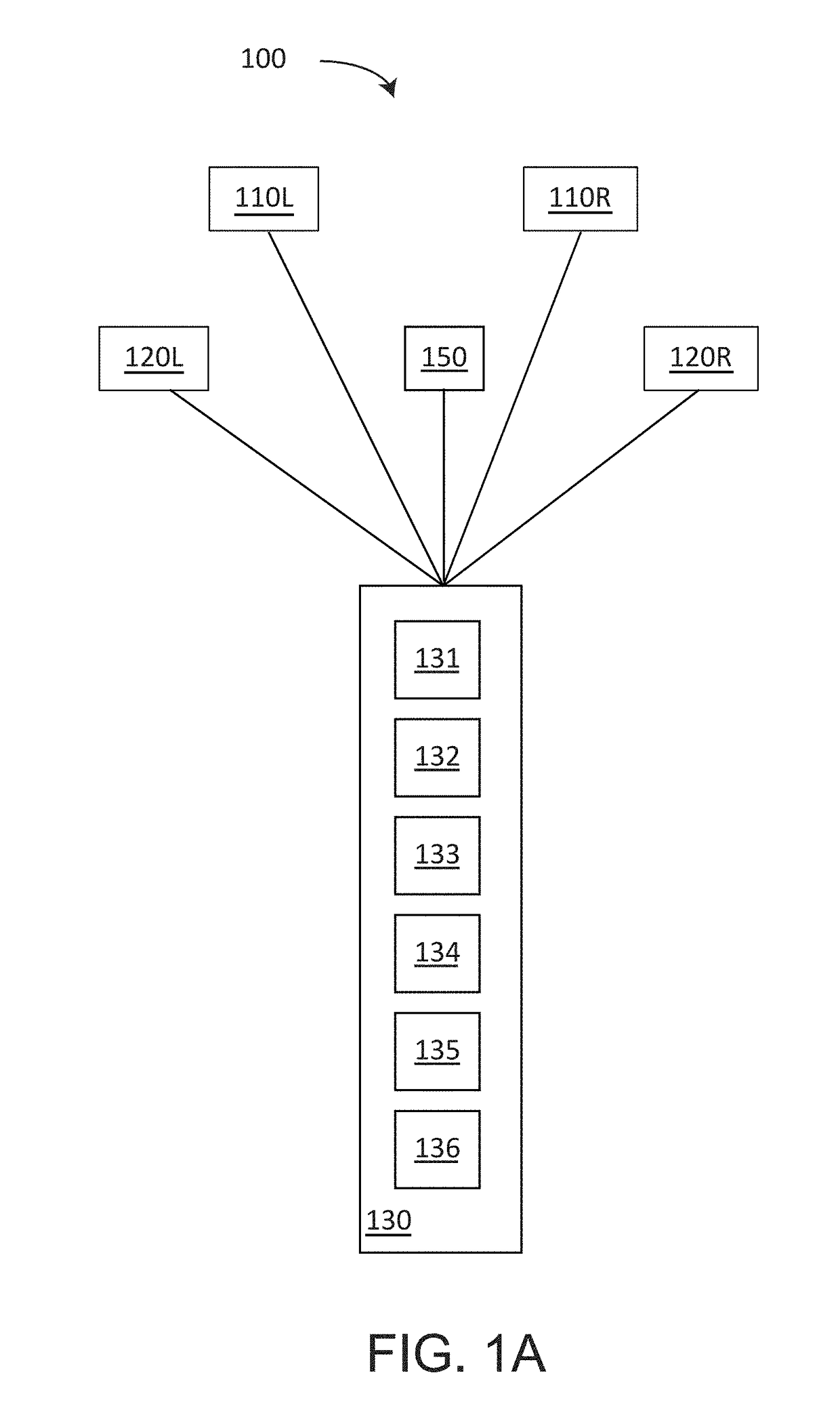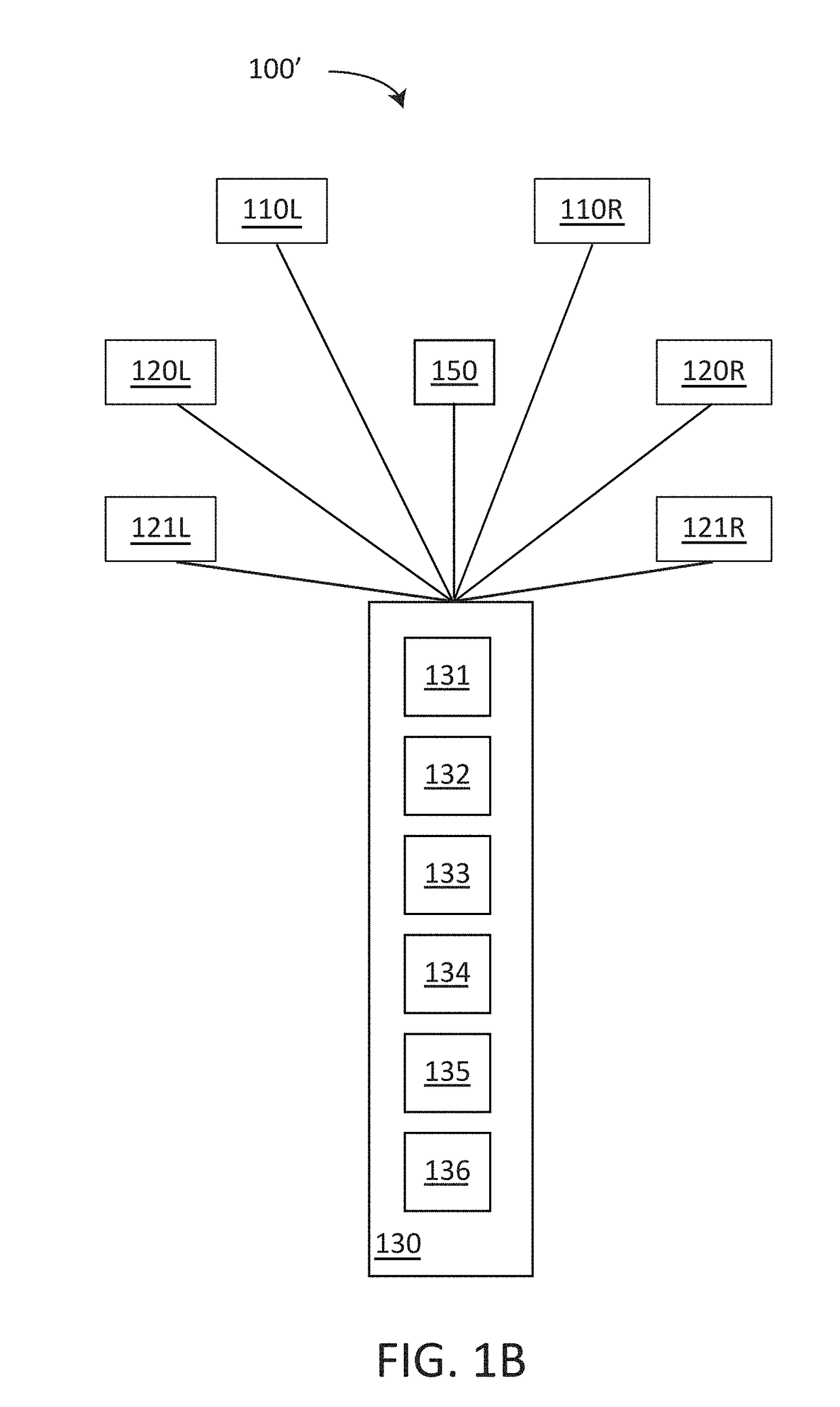Methods and systems for modulating stimuli to the brain with biosensors
a biosensor and brain technology, applied in the field of medical devices and methods, can solve the problems of difficult use of such equipment, bulky equipment to provide stimulus, difficult application of such equipment, etc., and achieve the effect of reducing the intensity and/or time of stimulus, and improving the benefit of users
- Summary
- Abstract
- Description
- Claims
- Application Information
AI Technical Summary
Benefits of technology
Problems solved by technology
Method used
Image
Examples
example 1
[0082]The following describes an example of a stimulation pattern that has been found by empirical studies to be effective for inducing sleep, including napping, increasing neuroplasticity, treating brain injuries from strokes, TBI, or mTBI, improving balance, including improving fine motor control and reaction times, and treating PTSD, to name a few indications.
[0083]Light and auditory stimulus at a first frequency may be provided for a first time segment, then at a second lower frequency for a second time segment, and then at a third lower frequency for a third time segment. Each time segment may include one or more sub-segments of light and auditory stimulus, each sub-segment comprising one of the subroutines described above, for example. The light and auditory stimulus may end after a pre-determined time period, such as 20 minutes. The light and auditory stimulus may be ramped back up (i.e., starting from the third frequency, then transitioning to the second frequency, and final...
example 2
[0088]The following describes an example of a stimulation pattern that has been found by empirical studies to be effective for inducing sleep. The stimulation pattern of Example 2 includes the part of the treatment regimen shown in Table 1. Specifically, the stimulation first cycles through a block of four Segment A outputs, then cycles through a block of four Segment B outputs, and then cycles through seven blocks of four Segment C outputs. The repetition of the last block of four Segment A outputs is not provided in Example 2.
[0089]The modification of the segments using subroutine 450e is the same as in Example 1.
example 3
[0090]The following described example of a stimulation pattern that has been found by empirical studies to be effective for increasing alpha wave brain activity, inducing neuroplasticity, treating stroke or other brain injuries such as TBI, mTBI, including improving balance, improving fine motor control and reaction times, and treating PTSD, to name a few indications.
[0091]HRV is used in the case of TBI and mTBI and PTSD as well—typically a relaxation effect is measured after the device has induced neuroplasticity—the stimulus is maintained at a standard level until that relaxation effect is measured, and then the device shifts towards a sleep modality to help improvements in balance that have occurred.
[0092]In this example, the four subroutines described above and herein are applied and repeated for multiple time segments, each at a predetermined stimulation (repetition) frequency. The four subroutines may be repeated, such as with each segment of the four subroutines lasting 120 s...
PUM
 Login to View More
Login to View More Abstract
Description
Claims
Application Information
 Login to View More
Login to View More - R&D
- Intellectual Property
- Life Sciences
- Materials
- Tech Scout
- Unparalleled Data Quality
- Higher Quality Content
- 60% Fewer Hallucinations
Browse by: Latest US Patents, China's latest patents, Technical Efficacy Thesaurus, Application Domain, Technology Topic, Popular Technical Reports.
© 2025 PatSnap. All rights reserved.Legal|Privacy policy|Modern Slavery Act Transparency Statement|Sitemap|About US| Contact US: help@patsnap.com



